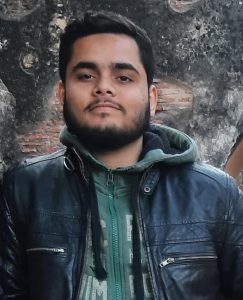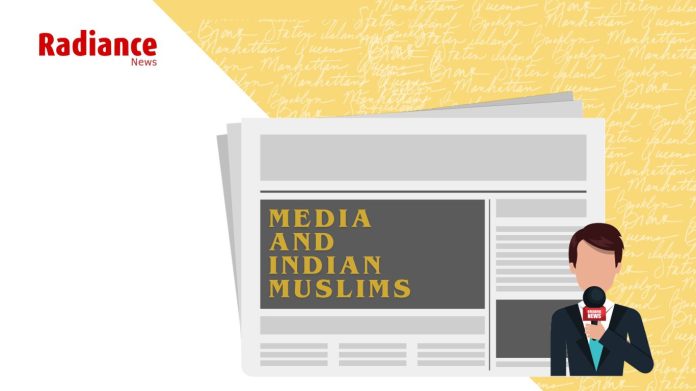Sustained efforts are required from media professionals, consumers, and the wider public to break free from harmful stereotypes and embrace diversity.

Media plays an important role in shaping public opinion in a democracy, particularly in transforming it with regard to government policies and other matters. An independent media is considered the fourth pillar of democracy. However, the media has undergone a lot of change in the last one decade owing to political changes in India. Instead of following a neutral policy, Indian media has become subservient to the government and indulges in promoting the interest of the ruling party. That is why it has lost its credibility. Regarding Muslims, the majority of the media has adopted Islamophobic attitude and giving publicity to those issues and incidents that create an anti-Muslim atmosphere in the country and generate hatred against Muslims and Islam in the majority community. It is because of this reason that Indian media took a totally anti-Palestine stand despite knowing full well that Palestinians are victims and Israel is the aggressor. An international website – BOOM – in its survey has revealed that a majority of anti-Palestine and anti-Muslim news reports on social media have its origin in India. This indicates the falling standard of journalism in India. Here are a few comments on the issues from Muslims youths…
 Shadab Khan
Shadab Khan
Journalism graduate, Delhi University
The Indian media – working under the influence of its fascist and authoritarian masters – is currently focused on demonising Indian Muslims. The discourse around Muslims is filled with misinformation and propaganda. A slight observation of the Indian media and Indian Muslims in the past few years would make it clear that the discourse is aimed at villainising, or worse, dehumanising Indian Muslims.
TV media has been the frontrunner of this Islamophobic campaign since a long time. The well-dressed anchors with their suits and ties started with sophisticated language. Shows such as Late Rohit Sardana’s ‘Hindustan mein tiranga, phehraya to danga?’ would not only put a question mark at the patriotism of an Indian Muslim, but also at the Indian media’s integrity. It was but the start. The sophistication faded with time and the question marks made way for terms like ‘Love Jihad’ and ‘Land Jihad’. “Do Indian Muslims want to harm the sovereignty of India” became the Prime-Time question when a certain Sharjeel Imam asked for chakka jam in response to CAA. Facts have been distorted and there were no rebuttals loud enough.
Tablighi Jamaat was made the scapegoat when the government couldn’t cope with its failure to stop Covid-19. The media then played its part and found a group of Muslims to demonise. If it wasn’t for the Bombay High Court, media trials would have declared Tablighi Jamaat responsible for the death of every Covid-infected Indian.
Such has been the relation of Media and Indian Muslims. We have been marked as the ‘other’ group of this country. We are responsible for every calamity that hits this nation, criminal for asking our rights and wrong for trying to live as equals. Credit where due, Indian media has made this possible with their rigorous campaign of Islamophobia over the years that Dharm Sansads can ask for a nationwide genocide without anyone batting much of an eye. It’s much like what Rwanda Radio was before the Rwandan Genocide, or what Nazi Mass Media was under Joseph Goebbels.

Zaid Ahmed
Indian Institute of Mass Communication
Media plays a crucial role in shaping public opinions and perceptions, including those of the Indian Muslim community. In a diverse country like India, where multiple religions coexist, the role of media becomes even more significant for marginalized communities like Muslims.
Indian Muslims have a long and complex history with the media. Unfortunately, media representations have often reinforced stereotypes and propagated Islamophobia. Negative portrayals of Muslims in movies, TV shows, and news articles have contributed to the marginalization and discrimination faced by the community. These portrayals not only perpetuate stereotypes but also affect the self-esteem and social acceptance of Indian Muslims.
However, not all media narratives are negative. In recent years, there has been an emergence of platforms that strive to provide a more balanced and inclusive representation of the Muslim community. These platforms showcase the accomplishments, struggles, and aspirations of Indian Muslims, challenging prevalent stereotypes and offering a more nuanced view.
Social media has played a significant role in empowering Indian Muslims and giving them a voice. It has allowed individuals to connect and share their stories, experiences, and opinions directly with a wider audience. Platforms like Twitter, Instagram, and Facebook have become spaces for dialogue, activism, and community-building.
Moreover, Muslim-centric media outlets have emerged to provide a platform for the voices of Indian Muslims. These outlets focus on providing accurate and unbiased information, promoting interfaith dialogue, and highlighting the diversity within the Muslim community.
However, there is still a long way to go in reshaping the media narrative around Indian Muslims. It requires a collective effort from both media professionals and the wider public to challenge harmful stereotypes and promote inclusion. Newsrooms must strive to be more diverse and inclusive to ensure fair and accurate portrayals of Indian Muslims and their experiences.
In conclusion, the media plays a significant role in shaping public perceptions of Indian Muslims. While historically, media representations have often reinforced stereotypes. Empowering Indian Muslims through social media and promoting inclusive media outlets are crucial steps toward creating a fairer and more accepting society. However, sustained efforts are required from media professionals, consumers, and the wider public to break free from harmful stereotypes and embrace diversity.




